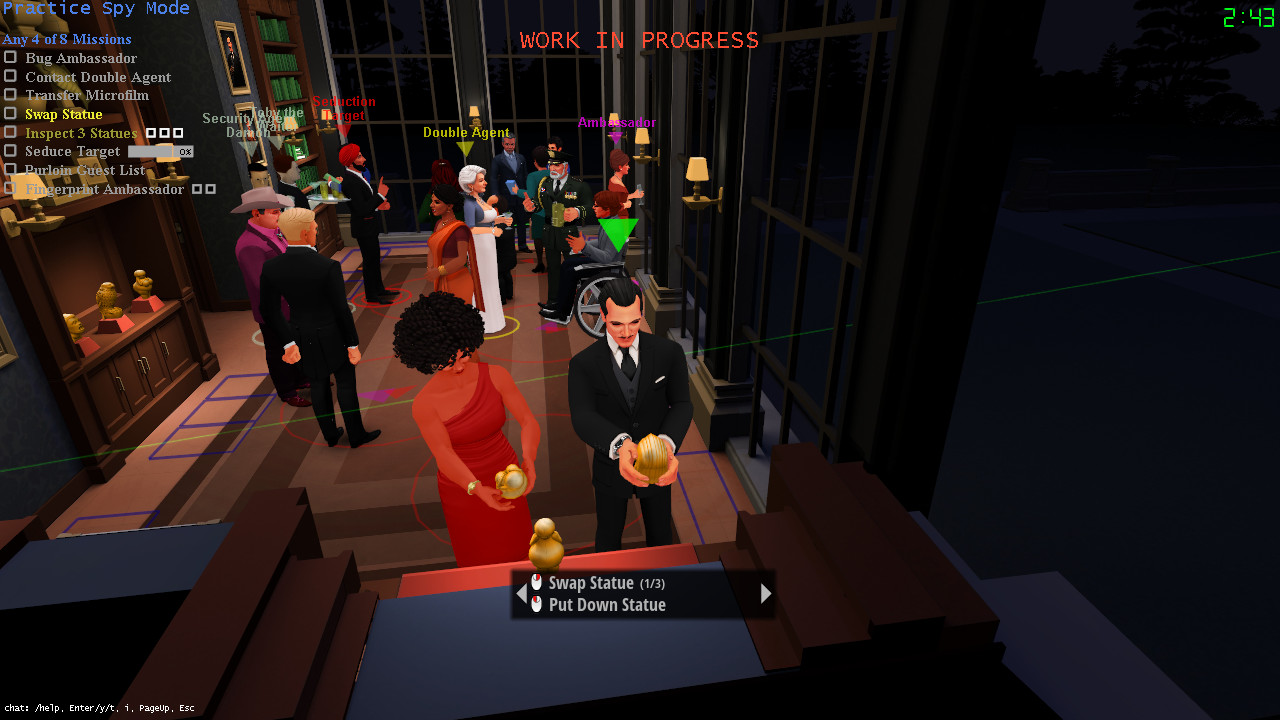
It used to look like this:Īnd this is how it looks in the version published on Steam: Take the Balcony stage, a level with an architectural style based on the pre-war Chelsea neighborhood of New York, as an example. I was able to test this new improved version of SpyParty at the last Game Developers Conference and it must be said that the game has come a long way in recent years. The Steam version has eight missions, a replay system with nearly 300,000 games in its database, and a forty-minute interactive tutorial narrated by Hecker himself, designed to help newbies understand how the game works.

The idea is that the player cannot identify in which year the game is set. SpyParty has a “timeless” style, as Hecker describes it, with objects on stage that could have existed in multiple modern eras. That is why Hecker has completely remodeled the graphics, adding twenty-one new characters with their own animations, and ten scenarios. However, they will change them, because the game is now available on the most popular video game platform on the planet. So far almost 24,000 copies have been sold through the official SpyParty website, where a small but active community of gamers has also formed. Rounds last a few minutes, and each game includes ten to twenty rounds.Ĭhris Hecker, who led much of the technology development for Spore, Maxis’s curious mix of life simulator, strategy and sandbox, has worked at SpyParty for eight years.

One must have the ability to identify unusual behavior, while the other must make his behavior as normal as possible while completing the mission objectives. In SpyParty, one player plays a sniper, the other a spy trying to stay incognito at a party. SpyParty, a game with one of the most original premises of recent years, was published on Steam in Early Access format a few days ago, with a price of twenty-five dollars.


 0 kommentar(er)
0 kommentar(er)
